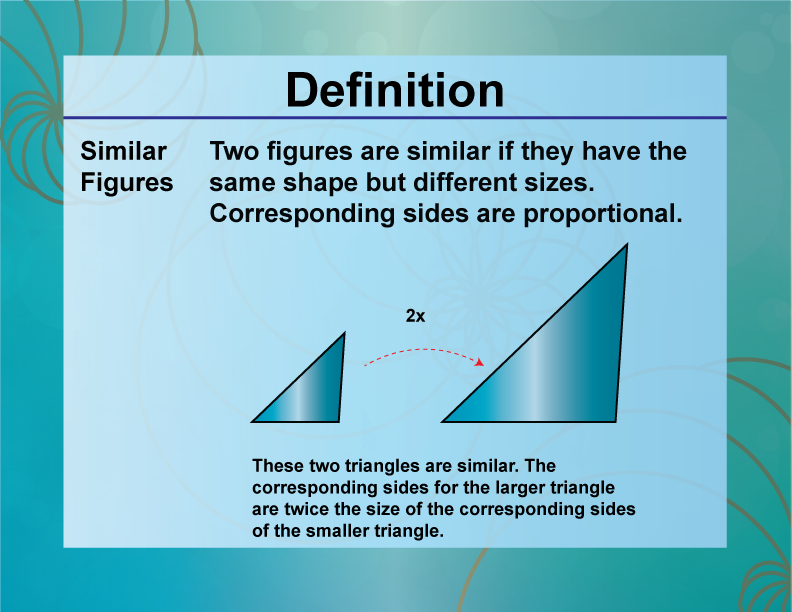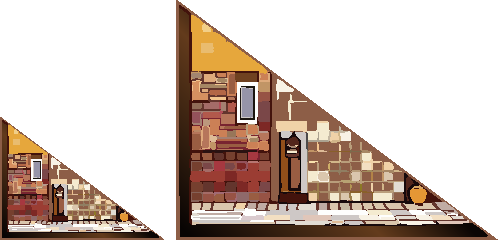
Display Title
Definition--Ratios, Proportions, and Percents Concepts--Similar Figures
Display Title
Similar Figures

Topic
Ratios, Proportions, and Percents
Definition
Similar figures are figures that have the same shape but may differ in size; their corresponding angles are equal, and their corresponding sides are proportional.
Description
Similar figures are fundamental in geometry and are used in various real-world applications, such as creating scale models and maps. For example, two triangles are similar if their corresponding angles are equal and their sides are in proportion. This concept is essential for understanding geometric relationships and solving problems involving shapes and sizes.
In math education, learning about similar figures helps students develop spatial reasoning and proportional thinking. For instance, if two rectangles are similar and one has dimensions 4 cm by 6 cm, while the other has dimensions 8 cm by 12 cm, students can determine that the scale factor is 2. This understanding is crucial for solving problems related to similar figures and their properties.
Teacher’s Script: "If you have two triangles, one with sides 3 cm, 4 cm, and 5 cm, and another with sides 6 cm, 8 cm, and 10 cm, they are similar because their corresponding sides are proportional (each side of the second triangle is twice the length of the corresponding side of the first triangle)."

For a complete collection of terms related to Ratios, Proportions, and Percents click on this link: Ratios, Proportions, and Percents Collection
| Common Core Standards | CCSS.MATH.CONTENT.6.RP.A.1, CCSS.MATH.CONTENT.6.RP.A.2, CCSS.MATH.CONTENT.6.RP.A.3, CCSS.MATH.CONTENT.7.RP.A.3, CCSS.MATH.CONTENT.HSG.SRT.A.1.B |
|---|---|
| Grade Range | 6 - 8 |
| Curriculum Nodes |
Algebra • Ratios, Proportions, and Percents • Proportions |
| Copyright Year | 2021 |
| Keywords | ratios, Percent, definitions, glossary terms, rates, proportions |